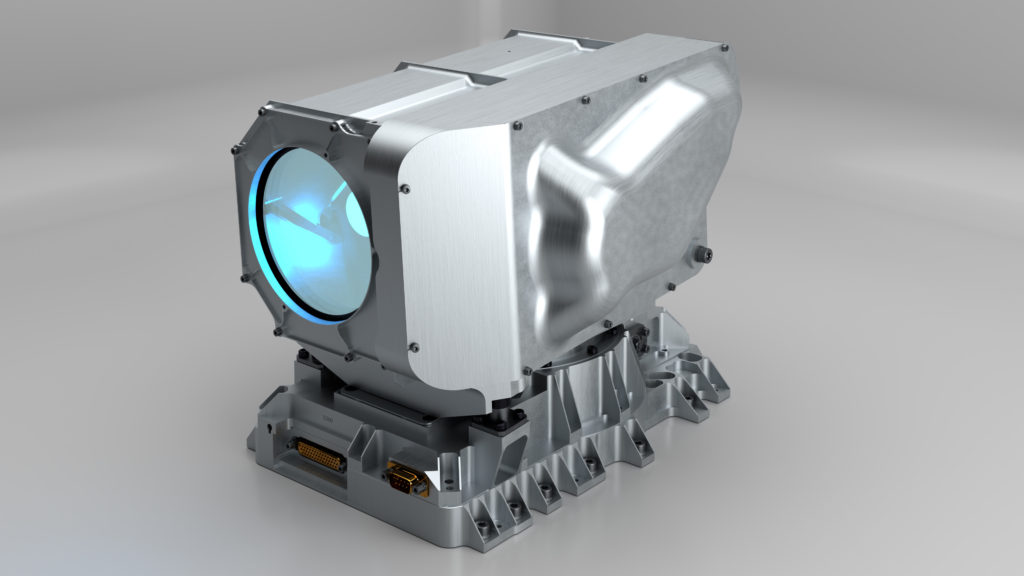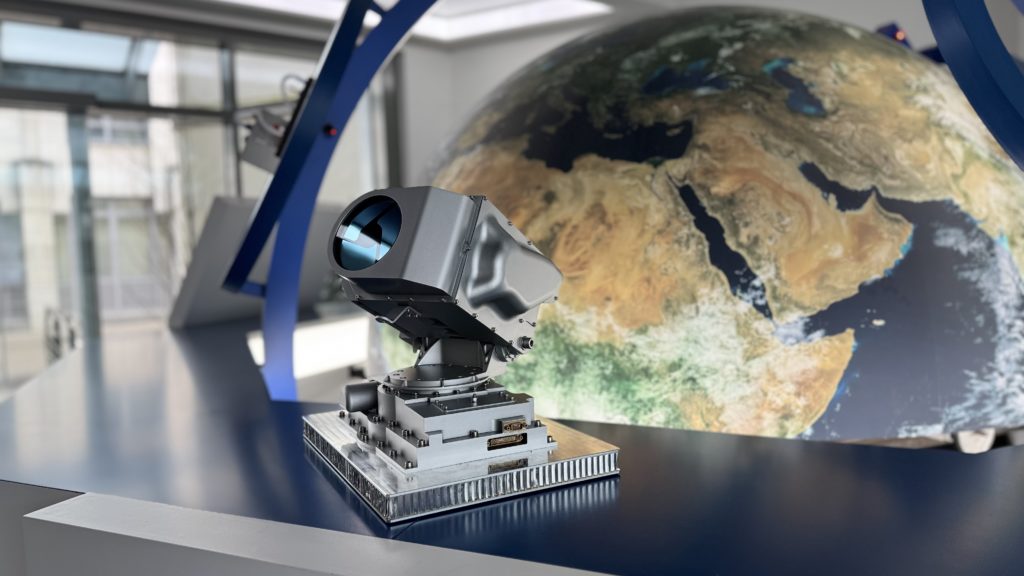Scalable Optical Terminal with an 80-millimetre telescope aperture
The SCOT80 scalable optical terminal was developed primarily for low-Earth orbit (LEO). Optical terminals transmit data using light instead of radio waves. This is why they are also referred to as ‘fibre-optic connections’ in space. Optical communication is also known as laser communication.
The SCOT80 is used to establish communication links between satellites and satellite constellations over distances of 5000 to 8000 kilometres, enabling the exchange of large volumes of data over these distances. Optical links can also be established with other platforms, such as aircraft, drones or stratospheric aircraft. The SCOT80 enables broadband communication with high data rates between 2.5 and 100 gigabits per second, thus meeting the growing demand for evolving digital infrastructure and rising data rate requirements.
Faced with the ‘constellation race’, the development of SCOT80 was driven by the idea of making optical communication technology cost-efficient, functional and robust. The SCOT80 is produced in series and was co-developed with support from DLR’s technology funding. There are over 1000 orders for the latest generation of terminals, more than 100 terminals have already been delivered to customers and its functionality in orbit has been demonstrated with 48 terminals.
The advantages of optical communication lie primarily in the high data rates, the difficulty of detecting the optical signal – making the communication link more resistant to interference and eavesdropping – and the ability of laser terminals to transmit and receive simultaneously. A specific application made possible by TESAT optical terminals is quantum key distribution. One disadvantage of optical communication is its dependence on the weather for optical connections from orbit to Earth: when cloud cover is dense, the connection to a ground station cannot be made as the optical signal is significantly weakened by atmospheric conditions. This disadvantage can be mitigated by appropriately positioning multiple ground stations, for example, distributed across several countries.
Links:
Tesat-Spacecom GmbH & Co. KG
www.tesat.de


